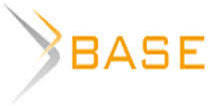Reassessment of history, or Тhe modern appearance of the "national Uzbek identity" in the minds of foreign researchers
After the collapse of the Soviet state in 1991, significant changes in the states of Central Asia, as well as assessment/ reassessment of now national history and historical events took place. This process occurred in almost all five states, except for Tajikistan, which from 1992-1997 was in a state of civil war, but after the end of this war, it also joined this process. Each Central Asian state has chosen its own path, its heroes/enemies, its symbols/signs, culture and traditions to legitimize its history and state. After gaining independence, the development of historical science also proceeded unevenly. The long existence under the control of the Soviet government also influenced the scientific activities of each state. Many scientific traditions of the twentieth century (Marxist, class) and methodology (primordialism) almost invariably continued to exist after the creation of independent states. After the collapse of the Soviet state, the established barriers to the study of all regions of the former socialist republics also fell. Central Asia enjoyed great interest among foreign researchers, which is evidenced by the sharp increase in political and academic publications in the early 90s of the twentieth century. The methodology of foreign studies of the identities of this region has also changed its guidelines. If until the 90s Central Asian identities were studied as colonized, peripheral, backward, unchanging, traditional, Muslim, then after the collapse of the Soviet state they began to be studied as post-colonial and post-social. However, instead of adequate, competent assessments of these events, subjective opinions and conclusions of researchers/centers and institutions began to appear to a greater extent. A revision begins on the basis of new directions, such as: constructivism, ethnosymbolism, modernism and postmodernism. The purpose of this article is to study and analyze English-language materials on the identity of the postcolonial Uzbeks (after 1991). At the end of the article we will try to give our reasoning and conclusions on the selected problem.

















While nobody left any comments to this publication.
You can be first.
Abashin, S. (2007), Natsionalizmy v Sredney Azii: v poiskakh identichnosti [Nationalism in Central Asia: in search of identity], Aleteyya, St.-Peterburg, Russia, (in Russ.).
Adams, L. (1999), “Celebrating independence: arts, institutions, and identity in Uzbekistan”, Ph.D. Thesis, Sociology, University of California, Berkeley, USA.
Akbarzadeh, Sh. (1997), “The political shape of Central Asia”, Central Asian Survey, 16 (4), 517–542.
Akiner, Sh. (2000), Central Asia: A Survey of the Region and the Five Republics, WriteNet is a Subsidiary of Practical Management, UK.
Allworth, E. (1990), The Modern Uzbeks: From the Fourteenth Century to the Present, Hoover Institution Press, Stanford, Calif.
Anderson, J. (1997), “Elections and political development in Central Asia”, The Journal of Communist Studies and Transition Politics, 13 (4), 28–53.
Askarov, M. M. (2019), “Analysis of categories of identity in the late 20th – early 21st centuries on the territory of modern Uzbekistan (based on English-language materials)”, Research Result. Social Studies and Humanities, 5 (4), 62-77, available at: URL: http://rrhumanities.ru/journal/issue/4-22-2019/ (Accessed 18 July 2020) (in Russ.).
Askarov, M. (2020), “English-speaking anthropology on the nature of Uzbek identity in the late 19th – early 20th centuries”, Bulletin of Anthropology, 1 (49), 239-258 (in Russ.).
Breuilly, J. (1996) Approaches to Nationalism in Mapping the Nation, in G. Balakrishnan (ed.), Verso, London, UK.
Brubeyker, R. (2012), Etnichnost' bez grupp [Ethnicity without groups], translated by I. Borisovoy, HSE Publishing House, Moscow, Russia (in Russ.).
Corbett, N. (2005), “Steppes to nationalism in Uzbekistan”, Masters diss. Manitoba, Canada.
Fierman, W. (2006), “On Uzbek ‘Nationalization’”, Anthropology & Archeology of Eurasia, 44 (4), 80-85.
Filippova, Ye. (2016), Natsii, gosudarstva i kul'tury. Kul'turnaya slozhnost' sovremennykh natsiy [Nations, States, Cultures. The cultural complexity of modern nations], in V. Tishkov, Ye. Filippova (ed.), Political encyclopedia, Moscow, Russia (in Russ.).
Gellner, E. (1983), Nations and Nationalism, Blackwell, Oxford, UK.
Gellner, E. (2019), Natsii i natsionalizmy [Nations and Nationalisms] [Online] URL: https://www.gumer.info/bibliotek_Buks/Polit/gelln/index.php (Accessed: 18 July, 2020) (in Russ.).
Ham, P. (2008), “Place branding: The State of the Art”, Annals of the American Academy of Political and Social Science, 616 (1), 126-149.
Haugen, A. (2003), The establishment of national republics in Soviet Central Asia, Palgrave Macmillan, NY.
Hegarty, S. (1995), “The rehabilitation of Temur: reconstructing national history in contemporary Uzbekistan”, Central Asia Monitor, (1).
Hiro, D. (2009), Inside Central Asia. A political and cultural history of Uzbekistan, Turkmenistan, Kazakhstan, Kyrgyzstan, Tajikistan, Turkey, and Iran, Overlook Duckworth, Peter Mayer Publishers, London and New York.
Hobsbawm, E. (1983), “Introduction: Inventing Traditions”, The Invention of Tradition, in E. Hobsbawm and T. Ranger (ed.), Cambridge University Press Cambridge, UK., 1-14.
Hohmann, S. (2010), “National identity and invented tradition: The rehabilitation of traditional medicine in post-soviet Uzbekistan”, The China and Eurasia Quarterly Forum, 8, 129-148.
Khantington, S. (2004), Kto my? Vyzovy amerikanskoy natsional'noy identichnosti [Who are we? Challenges to American National Identity], AST, Tranzitkniga, Moscow, Russia (in Russ.).
Kurzman, Ch. (1999), “Uzbekistan: The Invention of Nationalism in an Invented Nation”, Critique: Critical Middle Eastern Studies, 8 (15), 79–83.
Laruelle, M. (2016), The Nation Narrated Uzbekistan’s political and Cultural Nationalism, London and New York.
Lubin, N. (1984), Labour and nationality in Soviet Central Asia, MacMillan Press, London, UK.
Massell, G. (1974), The Surrogate Proletariat: Moslem Women and Revolutionary Strategies in Soviet Central Asia, 1919-1929, Princeton University Press, Princeton, New Jersey.
Phillips, A. and James, P. (2001), National Identity between Tradition and Reflexive Modernization: The Contradictions of Central Asia, National Identities, 3 (1), 21-35.
Pipes, R. (1970), The Formation of the Soviet Union: Communism and Nationalism, 1917–1923, rev. ed., Harvard University Press, UK., Cambridge, MA.
Schoeberlein-Engel, J. (1994), “Identity in Central Asia: Construction and Contention in the Conceptions of ‘Ozbek, Tajik, Muslim, Samarquandi, and Other Groups”, Ph.D. Thesis, Harvard University, MA.
Sengupta, A. (2014), “Image and Influence: The Politics of Nation-Branding in Uzbekistan”, Historiography and Nation-Building among Turkic Populations, in Birgit N. Schlyter (ed.), Stockholm & Istanbul, 5, 91-111.
Sengupta, A. (2017), Symbols and the Image of the state in Eurasia, Maulana Abul Kalam Azad Institute of Asian Studies, Kolkata, India.
Smith, A. (1999), Myths and Memories of the Nation, Oxford University Press Oxford, UK.
Smith, A. (1991), National identity, University of Nevada Press, Reno, Las Vegas, London.
Smith, A. (2008), The Cultural Foundations of Nations: Hierarchy, Covenant and Republic, Blackwell, Malden, MA.
Smith, A. (1971), Theories of Nationalism, Duckworth.
Ubiria, G. (2016), Soviet nation-building in Central Asia: the making of the Kazakh and Uzbek nations, Routledge, London and New York.
Weiser, E. (2015), “National Identity within the National Museum: Subjectfication within Socialization”, Studies in Philosophy and Education, 34, 385-402.
Zanca, R. (2011), Life in a Muslim Uzbek Village: Cotton Farming After Communism, Cengage Learning, Wadsworth, MA.